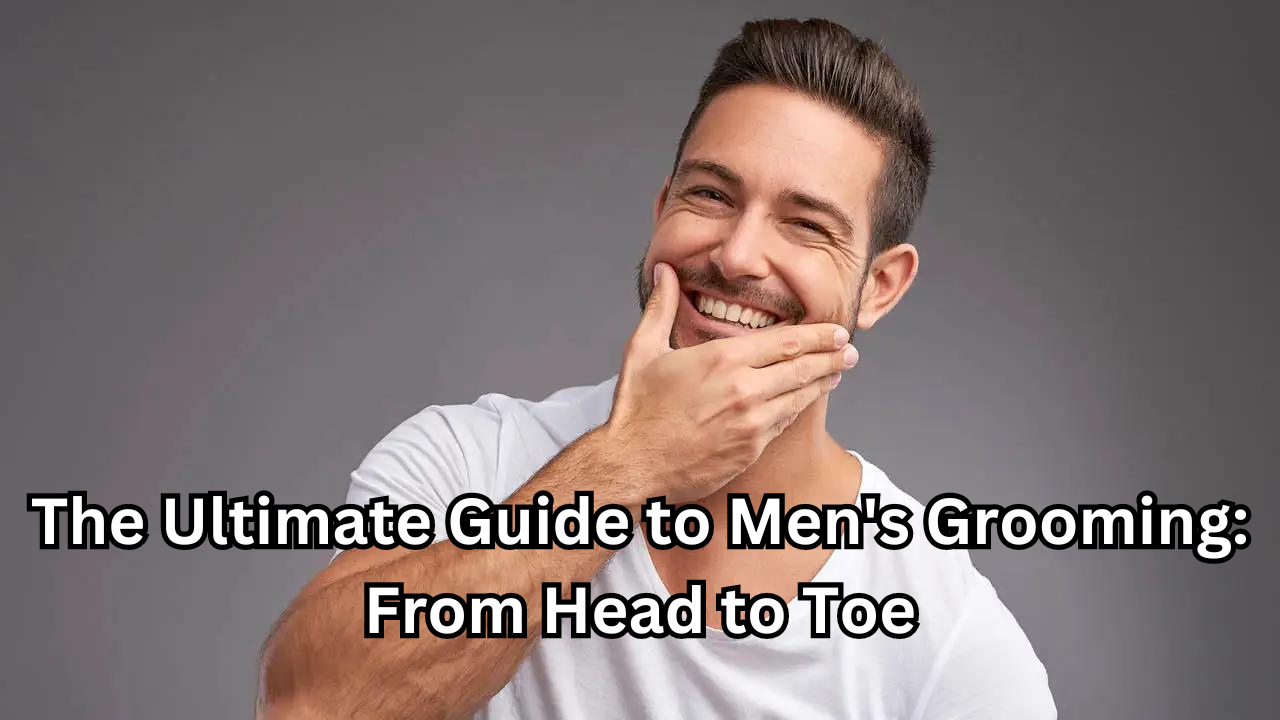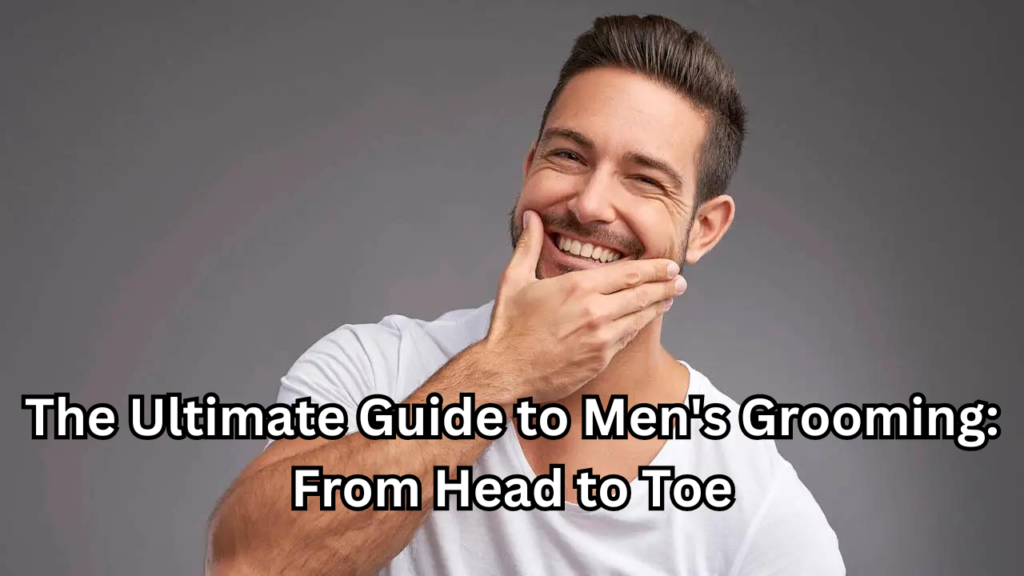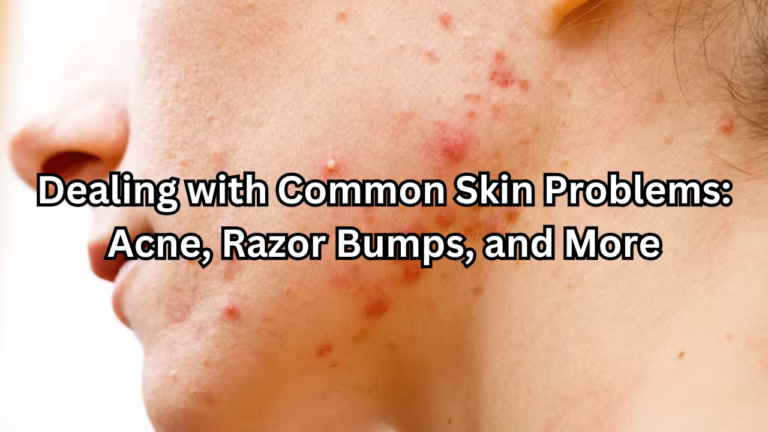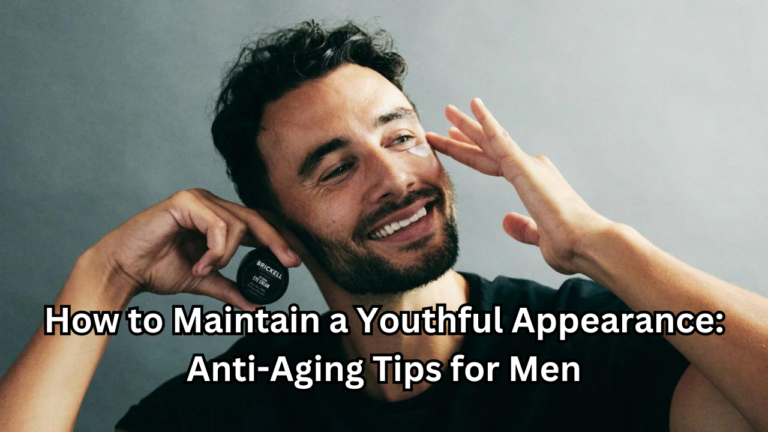

Table of Contents
Introduction
In today’s world, Guide to men’s grooming is more than just a routine—it’s a crucial aspect of personal care that can significantly influence a man’s self-confidence and overall image. While grooming may seem like a mundane task, it plays a vital role in how individuals perceive themselves and how they are perceived by others. Proper grooming reflects attention to detail, respect for oneself, and a commitment to presenting one’s best self.
The impact of grooming on self-confidence cannot be overstated. When men take the time to groom themselves, they often feel more polished and professional, which in turn boosts their confidence. This enhanced self-assurance can positively affect various aspects of life, from personal relationships to professional opportunities. A well-groomed appearance not only enhances one’s attractiveness but also communicates competence and care.
This guide will delve into the essentials of men’s grooming, offering practical advice and tips for creating a grooming routine that fits your lifestyle. From skincare and hair care to personal hygiene and styling tips, we’ll cover the key elements that contribute to a polished and professional look. Whether you’re a grooming novice or looking to refine your current routine, this guide will provide valuable insights to help you elevate your grooming game and present your best self to the world.
Guide to men’s grooming Hair Care
Choosing the Right Haircut
Selecting the right haircut is crucial for enhancing your overall appearance and complementing your face shape. Popular styles such as the classic crew cut, undercut, and quiff each serve different aesthetics and practical needs. To choose the best haircut for you, consider your face shape:
- Round Face: Opt for haircuts that add height and volume, such as the quiff or a faux hawk, which can elongate the appearance of your face.
- Square Face: Styles like the side part or textured crop can soften the angular features of a square face.
- Oval Face: Most styles work well, but consider adding some volume or texture to avoid a too-symmetrical look.
- Heart-Shaped Face: Haircuts that add width around the jawline, such as the side-swept fringe or layered cut, can balance the proportions of a heart-shaped face.
Getting regular trims is essential to maintaining a fresh look. Aim for a trim every 4-6 weeks to keep your haircut in shape and prevent split ends.
Hair Washing and Conditioning
Choosing the right shampoo and conditioner is fundamental to maintaining healthy hair. Here’s how to select products and manage your hair care routine:
- Shampoo: Select a shampoo based on your hair type and scalp condition. For oily hair, use a clarifying shampoo to remove excess oil. For dry or damaged hair, choose a moisturizing shampoo with nourishing ingredients.
- Conditioner: Opt for a conditioner that complements your shampoo. For fine hair, a lightweight conditioner will prevent limpness, while a rich conditioner is better for thick or dry hair to provide ample moisture.
The frequency of washing and conditioning depends on your hair type and lifestyle. Generally, washing your hair 2-3 times a week is sufficient for most people. Over-washing can strip the scalp of natural oils, leading to dryness and irritation. Adjust based on your personal needs, such as if you have an oily scalp or engage in frequent physical activities in fashion worlds.
Hair Styling
Choosing the right styling products and techniques can enhance your haircut and keep your hair looking its best:
- Hair Products:
- Gel: Ideal for a strong hold and wet look. Suitable for short hair or styles that require rigidity.
- Pomade: Provides a flexible hold with a natural shine, perfect for sleek and classic styles.
- Wax: Offers a matte finish and flexible hold, great for textured and tousled looks.
- Techniques for Styling:
- For a Sleek Look: Use a comb and a small amount of pomade to smooth and shape your hair. Apply to damp hair and style as desired.
- For Texture and Volume: Apply wax to dry hair, using your fingers to create movement and volume. A blow dryer can be used for additional lift before applying the product.
- Maintenance: Keep your style fresh by avoiding excessive touching or running your hands through your hair, which can lead to oil build-up and loss of shape.
Maintaining your hairstyle involves regular touch-ups and proper care of your hair products. Experiment with different products and techniques to find what works best for your hair type and personal style.
Guide to men’s grooming Facial Grooming
Proper facial grooming is essential for maintaining healthy skin and a well-groomed appearance. This section covers essential aspects of skincare, beard and mustache care, and shaving.
Skincare Routine
A consistent skincare routine is vital for healthy, radiant skin. Here’s how to build an effective routine:
- Cleansing: Choose a cleanser suited to your skin type. For oily skin, a foaming or gel cleanser helps remove excess oil. If you have dry skin, opt for a cream-based or hydrating cleanser to avoid stripping natural moisture. For sensitive skin, look for a fragrance-free, gentle cleanser to minimize irritation.
- Exfoliating: Exfoliation helps remove dead skin cells and can improve skin texture. Use exfoliants 2-3 times a week to avoid over-exfoliating. Physical exfoliants, like scrubs, use granular particles to slough off dead skin, while chemical exfoliants, such as those containing AHAs or BHAs, dissolve dead skin cells. Choose based on your skin’s sensitivity and needs.
- Moisturizing: Moisturizing is crucial for maintaining skin hydration and barrier function. Choose a moisturizer based on your skin type: lightweight, oil-free gels for oily skin; richer creams for dry skin; and hydrating, non-comedogenic options for combination skin. Apply moisturizer daily, ideally after cleansing and exfoliating.
- Sunscreen: Sunscreen protects your skin from harmful UV rays that can cause premature aging and skin damage. Opt for a broad-spectrum sunscreen with at least SPF 30. For daily use, a lightweight, non-greasy formula works well, while a higher SPF may be necessary for prolonged sun exposure. Apply sunscreen every morning, even on cloudy days.
Beard and Mustache Care
Maintaining your beard and mustache adds to a polished appearance. Here’s how to care for them effectively:
- Trimming and Shaping Techniques: Regular trimming keeps your beard and mustache looking neat and defined. Use sharp grooming scissors or an electric trimmer for precise cuts. Shape your beard according to your face shape, and trim to maintain the desired length. For mustaches, ensure they are evenly trimmed and styled.
- Beard Oils and Balms: Beard oils and balms condition and manage facial hair, promoting softness and reducing itchiness. Beard oils, often made with natural oils like jojoba or argan, help hydrate both the beard and the skin underneath. Apply a few drops daily to keep your beard looking healthy. Balms, which have a thicker consistency, provide additional hold and can help style your beard. Apply after oil for best results.
- Comb and Brush Types: Using the right comb and brush helps maintain beard and mustache health. A beard comb with wide teeth is excellent for detangling and shaping, while a boar bristle brush helps distribute natural oils and smooth the beard. Regular brushing also stimulates blood flow to the hair follicles, promoting growth.
Guide to men’s grooming Shaving
Choosing the right shaving tools and techniques is key to a smooth shave and minimizing irritation:
- Types of Razors:
- Electric Razors: Offer convenience and speed, suitable for quick shaves. They are generally easier on the skin but may not provide as close a shave as manual razors.
- Manual Razors: Provide a closer shave and allow for more control. Options include safety razors with replaceable blades or straight razors for the experienced shaver.
- Best Shaving Creams and Aftershaves: Choose shaving creams that create a rich lather and offer a smooth glide. Look for products with moisturizing ingredients to prevent dryness. After shaving, use an alcohol-free aftershave balm to soothe and hydrate the skin. Aftershaves with ingredients like aloe vera or witch hazel can help reduce irritation and redness.
- Tips for a Smooth Shave:
- Prepare Your Skin: Wash your face with warm water to soften the hair and open pores. Applying a pre-shave oil can also improve the shaving experience.
- Shave with the Grain: Shaving in the direction of hair growth reduces the risk of irritation and ingrown hairs.
- Use Light Pressure: Let the razor do the work; pressing too hard can cause nicks and cuts.
- Moisturize After Shaving: Apply a soothing aftershave or moisturizer to keep your skin hydrated and calm any post-shave irritation.
Guide to men’s grooming Body
Effective body grooming contributes to overall cleanliness, comfort, and confidence. This section covers body hair management, nail care, and hygiene.
Body Hair Management
Managing body hair is a personal choice and can greatly affect your comfort and appearance. Here’s a guide to help you decide between trimming and shaving, and to find the best tools and products:
- Trimming vs. Shaving:
- Trimming: Ideal for those who prefer to reduce hair length without complete removal. Trimming is less likely to cause irritation and can maintain a more natural look. It’s great for areas like the chest, back, and legs where a subtle reduction in hair length is desired.
- Shaving: Provides a smoother finish but can lead to irritation, ingrown hairs, and frequent maintenance. It’s suitable for areas like the armpits and pubic region, where a clean shave is preferred. Shaving can be done with razors or electric trimmers designed for body hair.
- Best Tools and Products for Body Hair Removal:
- Electric Trimmers: Versatile and efficient for trimming various body areas. Look for models with adjustable length settings and attachments for different body parts.
- Razors: Use razors designed specifically for body hair, often with multiple blades and a moisturizing strip to minimize irritation.
- Hair Removal Creams: Chemical depilatories offer a painless alternative to shaving and trimming. Choose products formulated for sensitive skin and follow the instructions carefully to avoid skin reactions.
- Waxing Kits: Provide longer-lasting results by removing hair from the root. Professional waxing services can be an option for a more thorough approach.
Nail Care
Maintaining well-groomed nails is an essential aspect of personal hygiene and overall appearance:
- Regular Nail Trimming and Shaping: Trim your nails regularly to prevent breakage and maintain a clean look. Use quality nail clippers and file the edges to avoid sharp or jagged surfaces. Shaping nails with a file helps prevent snags and keeps them looking neat. For hands, a squared or rounded shape is commonly preferred, while toenails should be trimmed straight across to prevent ingrown toenails.
- Cuticle Care and Moisturizing: Cuticles protect the nail matrix, so keep them healthy by gently pushing them back with a cuticle pusher after a shower or bath when they are softened. Avoid cutting cuticles to prevent infections. Moisturize your hands and cuticles regularly with a nourishing hand cream or cuticle oil to maintain softness and flexibility.
Hygiene
Daily hygiene practices are crucial for maintaining cleanliness and freshness:
- Choosing the Right Body Wash and Deodorant:
- Body Wash: Select a body wash that suits your skin type and personal preference. For sensitive skin, choose a fragrance-free, hypoallergenic formula. For dry skin, opt for moisturizing body washes with hydrating ingredients like glycerin. For oily skin, a clarifying body wash can help control excess oil.
- Deodorant: Deodorants help control body odor, while antiperspirants reduce sweat. Choose products based on your needs, whether you prefer a natural formula or a stronger option. Look for long-lasting protection and skin-friendly ingredients to avoid irritation.
- Importance of Daily Hygiene Practices:
- Regular Bathing: Shower daily or as needed to remove sweat, dirt, and oils. Ensure you cleanse all areas of the body, including underarms, feet, and groin.
- Oral Hygiene: Brush your teeth at least twice a day and floss daily to maintain oral health and freshness.
- Hand Hygiene: Wash your hands frequently with soap and water, especially before meals and after using the restroom, to prevent the spread of germs.
Guide to men’s grooming Foot Care
Taking care of your feet is essential for overall comfort and health. Proper foot care helps prevent issues like infections, calluses, and discomfort. This section covers foot hygiene, nail care, and skin care to keep your feet in top shape.
Foot Hygiene
Maintaining proper foot hygiene is crucial for preventing infections and keeping your feet comfortable:
- Proper Washing and Drying Techniques: Wash your feet daily with warm water and a mild soap to remove dirt and sweat. Pay attention to the spaces between your toes, as they can harbor bacteria and fungi. After washing, dry your feet thoroughly, especially between the toes, to prevent moisture buildup that can lead to fungal infections.
- Importance of Wearing Breathable Socks: Choose socks made from breathable materials like cotton or moisture-wicking fabrics. These help to absorb sweat and allow air to circulate, reducing the risk of fungal infections and unpleasant odors. Avoid wearing socks made from synthetic materials that can trap moisture and heat.
Nail Care
Proper nail care helps maintain healthy toenails and prevents common foot issues:
- Trimming and Shaping Toenails: Trim your toenails regularly to prevent them from becoming too long and causing discomfort or ingrown toenails. Cut them straight across rather than rounding the edges to reduce the risk of ingrown nails. Use nail clippers designed for toenails, as they are more durable and suitable for thicker nails.
- Handling Fungal Infections and Other Common Issues: Fungal infections, such as athlete’s foot, can cause itching, redness, and peeling. If you suspect a fungal infection, use antifungal treatments available over-the-counter or consult a healthcare professional for prescription options. For issues like thickened nails or ingrown toenails, seek advice from a podiatrist to address the problem effectively.
Skin Care
Taking care of the skin on your feet prevents dryness, calluses, and other skin issues:
- Moisturizing Feet and Addressing Calluses: Apply a foot cream or lotion daily to keep your feet hydrated. Focus on areas prone to dryness, such as the heels and balls of the feet. For calluses, use a pumice stone or foot file to gently exfoliate the hardened skin. Regular moisturizing and exfoliation help maintain smooth and healthy feet.
- Choosing the Right Footwear for Foot Health: Select shoes that provide adequate support, cushioning, and room for your toes. Avoid shoes that are too tight or have high heels, as they can cause discomfort and lead to foot problems. Opt for footwear made from breathable materials and with proper arch support to promote overall foot health.
Guide to men’s grooming Fragrance
A well-chosen fragrance can enhance your personal style and leave a lasting impression. This section explores how to select a signature scent and apply it effectively.
Choosing a Signature Scent
Selecting the right fragrance involves understanding its composition and finding a scent that complements your personality:
- Understanding Fragrance Notes and Types:
- Fragrance Notes: Perfumes are composed of three layers of notes—top, middle (heart), and base. Top notes are the initial scents you smell, often fresh or citrusy, and they fade quickly. Middle notes emerge as the top notes dissipate, providing the main character of the fragrance. Base notes are the long-lasting scents that linger after the perfume has dried down, often rich and deep.
- Types of Fragrances:
- Eau de Toilette (EDT): Light and less concentrated, usually containing 5-15% fragrance oil. Ideal for everyday wear and those who prefer a subtle scent.
- Eau de Parfum (EDP): More concentrated, with 15-20% fragrance oil. Offers a more intense and longer-lasting scent, suitable for special occasions or those who prefer a stronger fragrance.
- Parfum: The most concentrated form, with 20-30% fragrance oil. It provides the longest-lasting scent and is typically applied sparingly.
- How to Choose a Fragrance That Suits Your Personality: Your fragrance should reflect your personality and style. If you’re vibrant and energetic, opt for fresh, citrusy, or floral scents. For a more sophisticated and classic impression, choose woody or spicy fragrances. Take the time to test different scents and see how they evolve on your skin, as fragrances can vary from person to person.
Applying Fragrance
Applying fragrance correctly ensures you get the most out of your scent and makes it last longer:
- Best Practices for Application:
- Pulse Points: Apply fragrance to pulse points—areas where blood vessels are close to the skin’s surface, such as the wrists, neck, behind the ears, and the inner elbows. The warmth of these areas helps to diffuse and amplify the fragrance.
- Avoid Rubbing: After applying, avoid rubbing your wrists together or rubbing the fragrance in. This can alter the scent and reduce its longevity. Instead, let the fragrance settle naturally.
- How to Make Your Fragrance Last Longer:
- Moisturize Your Skin: Apply a fragrance-free moisturizer before applying your scent. Well-hydrated skin retains fragrance better than dry skin.
- Layering: Use complementary products such as body lotions or shower gels in the same fragrance family. Layering products can help enhance and extend the fragrance’s presence.
- Storage: Store your fragrance in a cool, dark place away from direct sunlight and heat. Exposure to light and temperature fluctuations can alter the scent over time.
Additional Grooming Tips
Enhancing your grooming routine involves more than just the basics. Maintaining consistency, adjusting for seasons, and avoiding common mistakes can significantly improve your overall grooming regimen.
Maintaining a Consistent Routine
Consistency is key to effective grooming:
- Importance of Routine and Sticking to a Schedule: Establishing and maintaining a regular grooming routine ensures that your skin, hair, and nails remain in optimal condition. A consistent schedule helps prevent issues like ingrown hairs, uneven skin tone, or neglected nails. By incorporating grooming practices into your daily or weekly routine, you build habits that promote long-term results and prevent last-minute rushes.
- Creating a Schedule: Design a grooming schedule that fits your lifestyle. For example, set specific days for shaving or trimming, and adhere to a daily skincare regimen. Use reminders or a grooming calendar to stay on track. Regularly assess your routine to adjust for any new needs or changes in your grooming preferences.
Seasonal Grooming Adjustments
Adapting your grooming routine to the changing seasons helps maintain skin and hair health throughout the year:
- Adapting Your Grooming Routine to Different Seasons:
- Spring and Summer: In warmer months, focus on managing sweat and oil. Use lighter, non-comedogenic skincare products and more frequent exfoliation to prevent clogged pores. Switch to breathable fabrics and light, fresh fragrances. Regularly trim body hair to keep cool and comfortable.
- Fall and Winter: Colder months often lead to dry skin and hair. Incorporate richer moisturizers and hydrating products into your routine. Consider using a humidifier to add moisture to the air. Pay extra attention to areas prone to dryness, such as hands, feet, and lips. Adjust your grooming routine to include deeper conditioning treatments for hair and more intensive skin care.
Grooming Mistakes to Avoid
Avoiding common grooming pitfalls helps maintain a polished and well-maintained appearance:
- Common Pitfalls and How to Avoid Them:
- Over-Exfoliating: Exfoliation is beneficial but can cause irritation if done too frequently. Stick to the recommended frequency for your skin type and use gentle exfoliants to avoid damage.
- Neglecting Sun Protection: Failing to use sunscreen can lead to premature aging and skin damage. Incorporate a broad-spectrum sunscreen into your daily routine, regardless of the season.
- Using Wrong Products: Using products not suited to your skin or hair type can lead to adverse effects. Choose products specifically formulated for your needs and consult with a professional if unsure.
- Inconsistent Grooming: Skipping grooming sessions or failing to follow a routine can result in neglecting important aspects of personal care. Establish a consistent schedule and stick to it to maintain a well-groomed appearance.
- Improper Techniques: Using incorrect techniques, such as aggressive shaving or incorrect trimming, can lead to irritation or uneven results. Educate yourself on proper grooming techniques and invest in quality tools to achieve the best results.
Conclusion
Effective Guide to men’s grooming is more than just an appearance enhancer—it’s a key component of personal well-being and confidence. Here’s a recap of the essential grooming tips and practices, along with a final encouragement to personalize your routine.
- Recap of Key Grooming Tips and Practices: From choosing the right haircut to maintaining a consistent skincare routine, each aspect of grooming plays a crucial role in how you present yourself and feel about yourself. Remember to regularly trim and style your hair, tailor your skincare routine to your skin type, manage body hair effectively, and select a signature fragrance that complements your personality. Applying these practices with attention to detail will ensure you look and feel your best.
- Encouragement to Personalize Your Grooming Routine: While general grooming advice provides a solid foundation, personalizing your routine is key to achieving optimal results. Adapt your grooming practices to fit your unique needs, preferences, and lifestyle. Experiment with different products and techniques to find what works best for you. Personalization ensures that your grooming routine not only enhances your appearance but also aligns with your individual goals and comfort.
- Final Thoughts on the Benefits of Maintaining a Good Grooming Regimen: A well-maintained grooming regimen extends beyond mere aesthetics; it boosts your self-esteem, enhances your professionalism, and contributes to your overall health. Consistent grooming fosters a sense of control and self-care, leaving you feeling refreshed and confident. By investing in your grooming routine, you invest in yourself, ensuring that you present your best self in every aspect of life.






